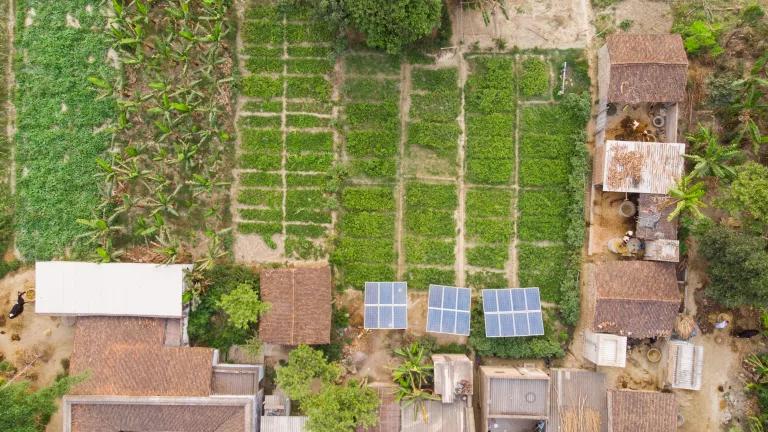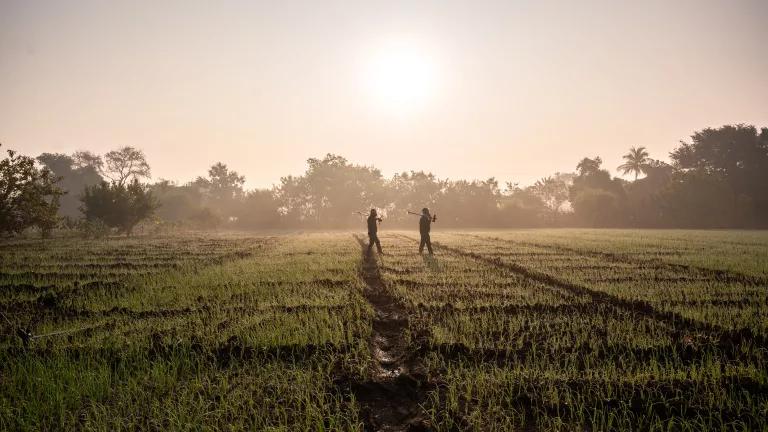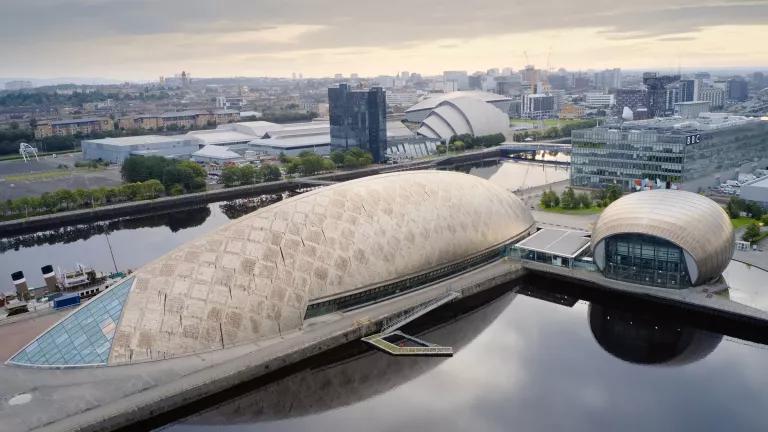India

NRDC works closely with the Self Employed Women’s Association, which promotes female leadership in rural villages in India through financial literacy, capacity building, financing, and entrepreneurial skill development.
Madhura Joshi/NRDC
India is emerging as a global leader and an economic powerhouse. Yet the nation of 1.3 billion people is facing multiple unprecedented challenges—extreme weather events, health burdens from pollution, poverty alleviation, and now COVID-19. As the world’s third-largest emitter of carbon dioxide, India is extremely vulnerable to the impacts of climate change, including more deadly heat waves and cyclones.
The fight to keep the planet below the 1.5 degrees Celsius threshold cannot be won without India’s support. For more than a decade, NRDC and our on-the-ground partners have been working with government agencies, academic institutions, and civil society leaders on three interconnected initiatives: clean air and healthy cities; cooling and efficiency; and renewable energy. Through the vision of fearless climate leaders and continued knowledge sharing, India’s strong climate plan will pave the way to sustainable economic development, create jobs, promote equitable access to clean energy, provide cleaner air for communities, and combat climate change.
Recognizing the importance of our India Program to achieving NRDC's goals, NRDC opened our India office, located in New Delhi, on January 18, 2023.
- NRDC is contributing to developing India’s first green bank-like structure within an existing public financial institution to help attract new capital and grow the market for clean energy. This includes working with the Indian Renewable Energy Development Agency to implement financing solutions—or green windows—to channel $1.2 billion (USD) in capital over 10 years, targeting underserved and emerging markets with decentralized renewable energy programs, such as rooftop solar, electric vehicles, and battery storage.
- Leveraging our relationships in India, China, and the United States, NRDC promoted global climate cooperation on the Paris Agreement, U.S.–India partnership, and the groundbreaking Kigali Amendment in the Montreal Protocol. To help India meet its commitments—and as part of the India Cooling Action Plan, which addresses the skyrocketing consumer demand for cooling—NRDC is working to phase down powerful heat-trapping hydrofluorocarbons, increase air conditioner efficiency, and promote low-cost cool roofs and green buildings for all.
- In Andhra Pradesh and Telangana, NRDC helped launch the country’s first standards and compliance system for energy-efficient buildings. Since 2017, more than 150 buildings have been compliant in the two states. In expanding this work to other states, we aim to save an estimated 3,453 TWh of cumulative electricity by 2030—the equivalent of taking 47 million cars off the road for one year.
- Across cities in India, NRDC’s work on life-saving heat action plans is building climate resilience. In western India, NRDC coordinated with city officials and public health institutions to develop the Ahmedabad Heat Action Plan in Gujarat, South Asia’s first early-warning system for extreme heat. Backed by groundbreaking scientific research, the plan helps protect those who are most vulnerable, including slum communities and outdoor workers. The award-winning plan has been replicated in more than 100 cities and 23 of India’s 29 states, representing more than 700 million people.
- NRDC worked with stakeholders in Ahmedabad and Hyderabad, Telangana, to launch the first-ever cool roof model program in India, initially covering 3,000 roofs for low-income families and now expanding toward 15,000 government and slum rooftops.
- In Ahmedabad, NRDC helped the city launch the first-ever air quality index plan. Extending the program to Pune, Maharashtra, NRDC promotes clean air plans and health-risk communication to minimize children’s exposure to air pollution while integrating pollution reduction measures in both cities.
- In Gujarat and Telangana, NRDC is working on electric mobility policies—focused on charging infrastructure—to improve air quality.
- Together with partners, NRDC conducted India’s first analysis on job creation in the solar and wind energy sectors. The groundbreaking analysis shows that achieving India’s ambitious renewable energy target of 175 gigawatts has the potential to create up to one million short-term and long-term job opportunities by 2022. Findings like this, which were shared with India’s parliament, help build political support for clean energy.
- In collaboration with a leading women’s grassroots group, NRDC helped improve the lives of more than 1,500 women salt farmers in the Gujarat desert by replacing expensive diesel-powered water pumps with solar-powered ones—increasing their incomes by 94 percent. This partnership is on track to reach 15,000 solar-powered pumps and 43,000 families. Now, we are developing village-level clean energy plans with solar pumps and energy efficiency solutions that help communities support livelihoods, save costs, and reduce pollution.

























